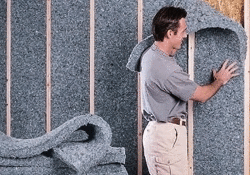PREPARE THE ROOM FOR THE PAINTING FLOORS AND CEILING

FLOORS Wood floors can be prepared either at the beginning or the end of the room makeover. If you are going to sand the floor, it is best to do this first. Either has it sanded professionally or rent an industrial sander to do it yourself. Be careful not to gouge the wood; it takes a light touch. Let the dust settle overnight and clean the walls and the floor. If you have removed wall-to-wall carpet, there will be numerous nail and staple holes. Sand the floor first to get rid of any old varnish, paint, wax, and ground-in dirt. If holes are still noticeable, repair with wood filler. Cover the floor completely with heavy-duty painter's drop cloths before you paint the ceiling or walls as any paint drips will soak into the raw wood floor. FURNITURE Before embarking on a furniture fix-up, examine the piece for structural problems that cannot be solved with a coat of paint, such as large cracks, wobbly legs, drawers that stick, and warping. Hardware can be replaced and the surface renewed, but the piece should otherwise be in good condition. With the availability of today's high-adhesion primers, it is no longer necessary to strip old wood furniture down to the raw wood before repainting. Sand away any chipped or loose paint, as well as paint drips or bumps, sand to rough up a shiny surface, and wipe away the dust with a tack cloth. Apply a coat of high-adhesion primer and you are ready to paint. If you do want to get down to the raw wood, use a commercial paint and varnish stripper. Always wear heavy-duty gloves and a mask, and work in a well-ventilated area as the chemicals in the stripper are toxic. Brush the gel-like stripper on to the surface, leave the room for the time recommended by the manufacturer, and then use a spatula to remove the finish. In areas that have many coats of paint, you will have to repeat the process. For hard-to-get-at crevices and joints, use steel wool that has been dipped into the stripper gel. Once all the old finish has been removed, wash to clean any residue left behind and let dry. Sand smooth, and use wood filler to make any small repairs. If you are going to stain the piece, sand all the wood to open the pores so that the stain can soak in. Furniture made from laminates or metal can also be refurbished with paint. Clean the surface well, then sand to rough up the surface. Remove any rust from metal. Apply the appropriate primer, either high- adhesion or metal primer, and then you are ready to paint.